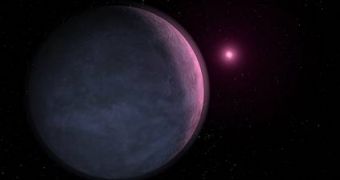The newly discovered object, dubbed MOA-2007-BLG-192Lb, is a terrestrial planet roughly three times as heavy as Earth orbiting a star called MOA-2007-BLG-192L located about 3,000 light years away from us. The finding also marks the discovery of the smallest star to have a planet orbiting around it, since it only weighs an estimated 6 percent of the mass of the Sun, thus being unable to sustain nuclear fusion reaction in the core.
Practically, MOA-2007-BLG-192L is a brown dwarf star or a low-mass hydrogen-burning star at best, because measurement uncertainties place its mass around a maximum of 8 percent of that of the Sun.
"Our discovery indicates that even the lowest-mass stars can host planets. No planets have previously been found to orbit stars with masses less than about 20 percent of that of the sun, but this finding suggests that we should expect very low-mass stars near the sun to have planets with a mass similar to that of the Earth", said leader of the study, David Bennett from the University of Notre Dame.
The planet is said to orbit its star from a distance roughly that between the Sun and Venus, although since MOA-2007-BLG-192L may have a degree of brightness somewhere between 3,000 and one million times smaller than that of our own star, the upper layers of its atmosphere could in fact be colder than the surface of Pluto. The powerful gravitational field of the planet should be able to sustain a thick atmosphere, while the ground temperatures could be similar to those on Earth as the interior of the planet heats up by radioactive decay.
The new exoplanet is the seventh of a series of objects found through gravitational microlensing, which involves amplifying the light reflected by the planet with the help of the gravitational field of a relatively massive object, such as a star. "This discovery demonstrates the sensitivity of the microlensing method for finding low-mass planets, and we are hoping to discover the first Earth-mass planet in the near future", says Bennett.
So far, more than 280 exoplanets have been discovered throughout the galaxy, most of which are gas giants found by measuring the radial velocity of the star.

 14 DAY TRIAL //
14 DAY TRIAL //